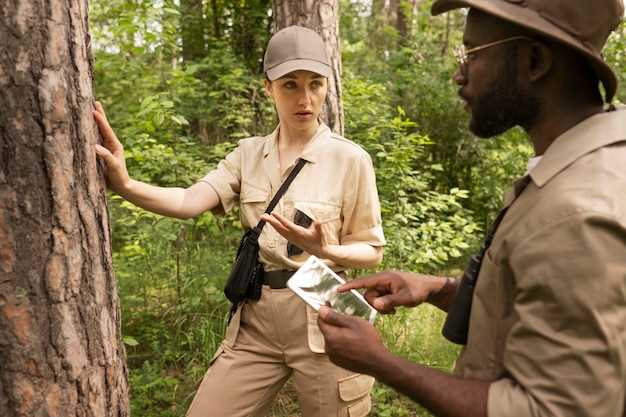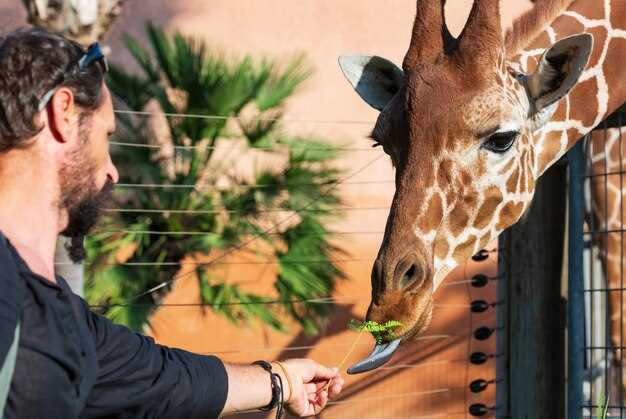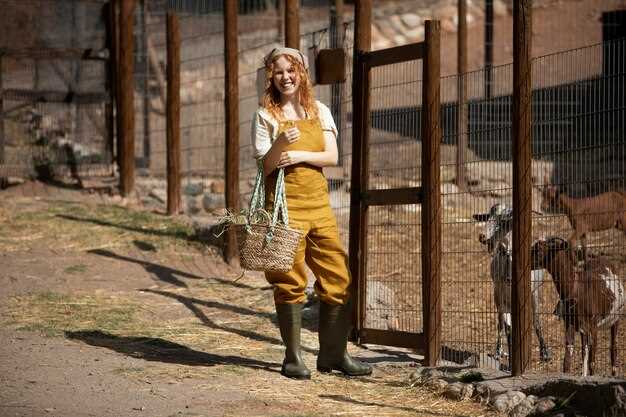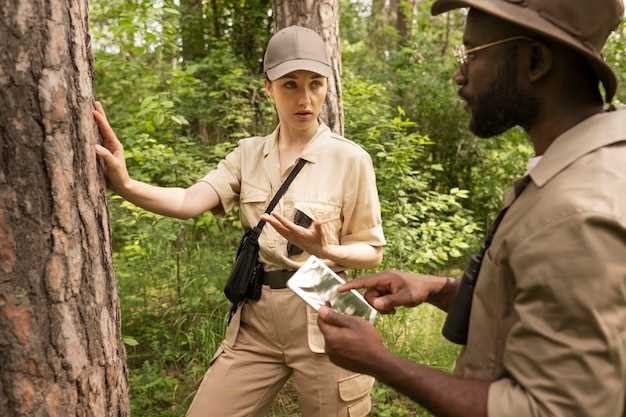
Embarking on a journey through the captivating realm of zoo inhabitants unveils a myriad of enigmatic behaviors and captivating interactions. Delving into the lives of these remarkable creatures, we are granted a unique opportunity to witness the intricacies of their daily routines, their social dynamics, and the fascinating ways in which they adapt to their captive environments.
Within the confines of their enclosures, these denizens of the animal kingdom exhibit a rich tapestry of behaviors, each one a testament to their innate instincts and adaptive abilities. From the graceful movements of a majestic feline to the playful antics of a mischievous primate, every action serves as a window into their world, offering us a glimpse into the complex web of relationships and survival strategies that define their existence.
As we observe these captivating creatures, we are drawn into a realm where communication takes on various forms. The subtle flick of a tail, the piercing gaze of an eye, or the rhythmic beat of a wing all convey messages that are deciphered by their fellow inhabitants. Through these non-verbal cues, they establish hierarchies, form alliances, and navigate the intricate social webs that govern their lives.
Yet, behind the veil of these captivating displays lies a deeper understanding of the challenges faced by these zoo residents. The artificial environments they inhabit present a unique set of circumstances, requiring them to adapt and modify their behaviors in order to thrive. From the development of novel foraging techniques to the creation of innovative social structures, these animals constantly evolve, showcasing their remarkable resilience and ability to overcome adversity.
Join us on an expedition into the captivating lives of zoo dwellers, as we unravel the mysteries that lie beneath their seemingly ordinary existence. Through careful observation and scientific inquiry, we aim to shed light on the intricacies of their behaviors, offering a deeper appreciation for the remarkable creatures that grace our zoos and the importance of their conservation in an ever-changing world.
The Social Dynamics of Zoo Animal Groups
In this section, we will delve into the intricate social dynamics that exist within zoo animal groups. We will explore the complex relationships, interactions, and hierarchies that shape the lives of these captivating creatures. By examining their social behaviors, we can gain a deeper understanding of the fascinating dynamics at play in the zoo environment.
1. Social Structures and Hierarchies
Within zoo animal groups, social structures and hierarchies are prevalent. These structures determine the roles and positions of individuals within the group, influencing their access to resources, mating opportunities, and overall well-being. We will examine how these hierarchies are established, maintained, and sometimes challenged, shedding light on the power dynamics that shape the social fabric of zoo animal communities.
2. Communication and Social Interactions
Communication plays a vital role in the social dynamics of zoo animal groups. Through various vocalizations, body language, and other forms of communication, individuals convey information, establish social bonds, and resolve conflicts. We will explore the different communication strategies employed by zoo residents and how these interactions contribute to the cohesion and stability of their social groups.
| Key Topics | Subtopics |
|---|---|
| Social Structures | – Dominance hierarchies |
| – Social roles and positions | |
| – Resource access | |
| Communication | – Vocalizations |
| – Body language | |
| – Social bonding |
By delving into the social dynamics of zoo animal groups, we can gain valuable insights into the intricate web of relationships and interactions that shape their lives. Understanding these dynamics not only enhances our appreciation for the complexity of animal behavior but also aids in the development of effective conservation and management strategies for zoo populations.
Understanding Animal Communication: Beyond Words
Delving into the intricate world of animal communication unveils a realm beyond the realm of spoken language. In this section, we explore the fascinating ways in which animals express themselves, conveying messages through a myriad of signals, gestures, and vocalizations. By delving into the depths of their non-verbal communication, we gain a deeper understanding of the complex social dynamics, survival strategies, and emotional connections that exist within the animal kingdom.
Unveiling the Language of Signals

Animals have developed an astonishing array of signals to communicate with one another. From subtle movements and postures to elaborate displays, these non-verbal cues play a crucial role in conveying information about dominance, territory, mating availability, and even potential threats. By deciphering the meaning behind these signals, researchers gain insights into the intricate social hierarchies and behavioral patterns that shape animal communities.
The Melodies of the Animal Kingdom
While humans rely heavily on spoken language, animals often communicate through a diverse range of vocalizations. From the haunting melodies of birdsong to the deep rumblings of elephants, each species has its own unique repertoire of sounds. By studying these vocalizations, scientists can unravel the hidden messages encoded within, such as warnings, courtship calls, or even expressions of joy. Understanding the nuances of animal vocalizations provides a window into their emotional states and helps us appreciate the richness of their communication.
The Role of Enrichment in Promoting Natural Behaviors

Enhancing the living environment of zoo animals is crucial for promoting their natural behaviors and overall well-being. By providing enrichment, zoos aim to recreate the diverse and stimulating conditions found in the animals’ natural habitats. This article explores the significance of enrichment in encouraging animals to engage in instinctive behaviors, fostering their physical and mental health.
Creating a Stimulating Environment
Enrichment techniques involve the introduction of various stimuli that mimic the challenges and opportunities animals encounter in the wild. These stimuli can include novel objects, scents, sounds, and even food puzzles. By introducing these elements into the animals’ habitats, zoos encourage them to explore, forage, and engage in social interactions, just as they would in their natural habitats.
For example, providing puzzle feeders for primates not only stimulates their problem-solving abilities but also encourages them to use their dexterity and intelligence to obtain food. Similarly, hiding food in different locations within an enclosure encourages animals to search and forage, mimicking the natural hunting and scavenging behaviors they would exhibit in the wild.
Promoting Physical and Mental Well-being
Enrichment plays a vital role in promoting the physical and mental well-being of zoo animals. By engaging in natural behaviors, animals are more likely to maintain their physical fitness and exhibit fewer signs of stress or boredom. Enrichment also helps prevent the development of stereotypic behaviors, such as pacing or self-mutilation, which can arise from a lack of stimulation or environmental complexity.
Furthermore, enrichment provides animals with opportunities for mental stimulation and cognitive engagement. By challenging their problem-solving skills and encouraging exploration, animals are able to exercise their minds, leading to increased cognitive abilities and overall mental enrichment.
In conclusion, enrichment is a fundamental aspect of promoting natural behaviors in zoo animals. By creating stimulating environments and providing opportunities for physical and mental engagement, zoos can contribute to the well-being and conservation of these fascinating creatures.
Investigating the Impact of Captivity on Animal Behavior
Examining the Effects of Confinement on Animal Actions
When animals are held in captivity, their natural behaviors and instincts can undergo significant changes. This section delves into the investigation of how captivity influences the behavior of diverse species, shedding light on the consequences of confinement on their physical and psychological well-being.
Understanding the Altered Behavioral Patterns
One crucial aspect of studying the impact of captivity on animal behavior is recognizing the modified behavioral patterns that emerge in confined environments. The restricted space, limited social interactions, and altered feeding routines can lead to behavioral adaptations that differ from those observed in their natural habitats. By examining these changes, researchers aim to gain insights into the various ways in which captivity affects animals.
Exploring the Psychological Effects of Captivity
Another key focus of investigating the impact of captivity on animal behavior is understanding the psychological effects it has on individuals. The loss of freedom, reduced environmental complexity, and lack of control over their surroundings can result in stress, anxiety, and even depression among captive animals. By delving into the psychological aspects, researchers strive to comprehend the emotional toll that captivity takes on these fascinating creatures.
By delving into the altered behavioral patterns and psychological effects of captivity, researchers aim to enhance our understanding of the consequences of confining animals. This knowledge can contribute to the development of improved captive environments and welfare practices, ultimately promoting the well-being of zoo residents and other animals held in captivity.
Unraveling the Mysteries of Animal Migration
Delving into the enigmatic phenomenon of animal migration, we embark on a captivating journey to understand the intricate patterns and motivations behind this awe-inspiring behavior. By studying the remarkable journeys undertaken by various species, we gain valuable insights into the mechanisms that drive these migrations and the remarkable adaptations that enable animals to navigate vast distances.
Migration, a natural instinct ingrained in countless species, encompasses a wide range of behaviors and strategies. From the majestic annual journeys of birds spanning continents to the epic oceanic voyages of marine creatures, the diversity of migration patterns is as fascinating as it is perplexing. By unraveling the mysteries of animal migration, we unlock a deeper understanding of the ecological significance and evolutionary implications of this extraordinary phenomenon.
One of the key aspects of animal migration lies in the navigation abilities possessed by migratory species. Whether it be the utilization of celestial cues, magnetic fields, or landmarks, animals have evolved remarkable mechanisms to guide themselves across vast distances. By examining these navigation strategies, scientists can shed light on the intricate sensory systems and cognitive abilities that enable animals to successfully complete their migratory journeys.
Furthermore, the timing and synchronization of migration events are crucial factors that contribute to the success of these journeys. The ability of animals to accurately time their departures and arrivals, often in response to environmental cues such as seasonal changes or resource availability, showcases the remarkable adaptability and resilience of migratory species. Understanding the mechanisms behind this timing can provide valuable insights into the delicate balance between internal biological clocks and external environmental factors.
As we delve deeper into the mysteries of animal migration, we uncover the interconnectedness of different ecosystems and the vital role that migratory species play in maintaining ecological balance. By studying the migratory patterns of animals, we gain a greater appreciation for the complex web of interactions that exist within and between habitats, highlighting the importance of conservation efforts to ensure the survival of these remarkable creatures.
| Key Points: |
|---|
| – Animal migration is a captivating and diverse phenomenon. |
| – Navigation abilities and timing are crucial aspects of migration. |
| – Migration reveals the interconnectedness of ecosystems. |
| – Conservation efforts are essential for the survival of migratory species. |
The Intricate Parenting Strategies of Zoo Animals
Within the captivating realm of zoo animals, a fascinating aspect that demands attention is the intricate parenting strategies employed by these remarkable creatures. As they navigate the challenges of raising their young in captivity, zoo animals exhibit a myriad of behaviors and techniques that showcase their adaptability and dedication to ensuring the survival and well-being of their offspring.
1. Nurturing Bonds and Social Cohesion
One of the key elements in the parenting strategies of zoo animals is the establishment of nurturing bonds and the promotion of social cohesion within their respective groups. Through various forms of communication, such as vocalizations, body language, and grooming rituals, these animals create a sense of unity and cooperation, which in turn enhances the protection and care provided to their young.
2. Teaching and Learning
Another remarkable aspect of zoo animal parenting is the active role they play in teaching and facilitating learning experiences for their offspring. Through patient guidance and demonstration, adult animals impart essential skills and knowledge to their young, ensuring their ability to navigate their environment, find food, and interact with others effectively. This process of teaching and learning not only strengthens the parent-offspring bond but also equips the young animals with the necessary tools for survival.
These intricate parenting strategies of zoo animals highlight their remarkable adaptability and intelligence. By nurturing bonds, promoting social cohesion, and actively teaching their young, these animals demonstrate their commitment to ensuring the successful upbringing and future success of their offspring. Understanding and appreciating these strategies not only provides valuable insights into the lives of zoo residents but also serves as a reminder of the complex and awe-inspiring nature of animal behavior.

